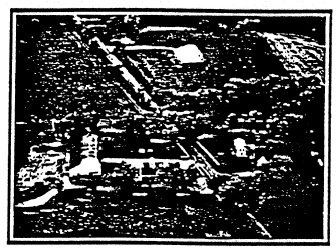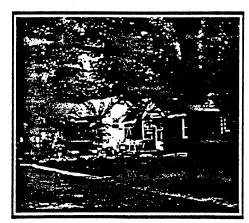HOUSING
Latest version.
- ContentsIntroductionObjective 1: Limit Sprawl 313Objective 2: Provide Diverse Housing Options 314Objective 3: Reduce Visual Conflict Housing Benchmarks 315Housing Benchmarks 317HOUSINGA majority of the development that has occurred in unincorporated portions of Lake County over the last 10 years has been residential, including a substantial number of large homes sited on large lots. This type of development is land consuming and typically compromises the rural small town character that originally made the area appealing. The sprawl and congestion, excess curb cuts, increasing demands on services and rising costs of living associated with increasing populations and numbers of homes were of great concern to participants at the township forums. Many people feared the congestion that already characterizes incorporated portions of the county.Another issue identified through the community forums was the lack of quality, affordable housing, particularly in the unincorporated areas of Calumet Township. In other parts of the county, finding housing within 80% of median home value (the typical measure of affordability) is becoming an issue. In some cases, the long time residents of the unincorporated townships are experiencing difficulty with increasing building permit prices and the availability of opportunities for first-time ownership for their grown children. At this time it is necessary to introduce flexible provisions for affordable housing in anticipation of growing needs. A third housing issue present in the developing portions of the county is the contrast between newer larger homes and the original farm houses and older subdivisions.The housing programs for unincorporated Lake County are based on the objectives of....• limiting sprawl and avoiding unnecessary land consumption• providing diverse, affordable housing options• reducing visual conflict between new and existing homes and subdivisionsLake County Farm House and Outbuildings
 Typical Lake County Residential Subdivision
Typical Lake County Residential Subdivision Home in Lake County
Home in Lake County Objective One: Limit SprawlAction Step 1Promote cluster developments through tax and infrastructure incentives, encouraging builders to develop smaller lots and retaining the overall density and character of the area.Action Step 2Encourage housing agencies and developers to take advantage of established residential target areas.• utilize Land Preservation Districts• enforce a points-system for grading and approving residential development• encourage diversity of siting concepts such as semi-attached, and• attached units with common open spaces.Action Step 3Assess new housing projects based upon infrastructure, service and school capacity, visual character and potential for adding to road congestion. The developer should be responsible for providing infrastructure and service capacity they utilize.Semi-Attached Homes in Lake County
Objective One: Limit SprawlAction Step 1Promote cluster developments through tax and infrastructure incentives, encouraging builders to develop smaller lots and retaining the overall density and character of the area.Action Step 2Encourage housing agencies and developers to take advantage of established residential target areas.• utilize Land Preservation Districts• enforce a points-system for grading and approving residential development• encourage diversity of siting concepts such as semi-attached, and• attached units with common open spaces.Action Step 3Assess new housing projects based upon infrastructure, service and school capacity, visual character and potential for adding to road congestion. The developer should be responsible for providing infrastructure and service capacity they utilize.Semi-Attached Homes in Lake County Objective Two: Provide Diverse Housing OptionsAction Step 1Perform a regular housing analysis which will address the condition, affordability, and quality of the housing stock. The results of the housing survey will determine the need for and extent of remedy programs.Action Step 2Develop and adopt inclusionary zoning ordinances that require developers to build a certain percentage of low-to-moderate income units as a condition of approval. The percentage is set on a case by case basis, depending on the current needs as revealed by the annual housing survey. The county would assume flexibility in requiring developers to provide affordable housing on a case-by-case basis from zero to forty percent of their proposed units.• requires a change in the zoning ordinance calling for the creation of inclusionary zones and a change in the zoning map as inclusionary overlay zones or as a conditional use.• alternatives:- Off-Site Development: the developer is permitted to construct the lower income units on a separate, unrelated site;- Payments in Lieu of Development: the developer can make a payment to an appropriate public or non-profit entity which will use the proceeds to further affordable housing in some manner, in lieu of constructing any low income units;- Transfer Credit: the developer can purchase credits from other developers who have produced an excess of affordable units;- Donation of Land: the developer is permitted to donate a parcel of land within his development to a public or nonprofit entity, on which the agency will have the required lower-income units built.• prior to the preliminary approval of the development, the Plan Commission will establish the percentage of units that should be low-to-moderate income. If the developer has not made any provisions and construction is completed, then the county requires that the development make a payment in lieu of construction prior to the sale of the units.Action Step 3Offer density bonuses to developers to encourage the construction of affordable housing. The bonuses will increase the allowable density for developers that include affordable housing in their developments.Action Step 4Encourage the maintenance of the existing housing stock by offering programs and grants to low-to-moderate income home owners for repairs and routine maintenance. These programs will aid senior citizens and the residents of unincorporated Calumet Township in particular in maintaining their homes and continuing general paint-up and fix-up.Action Step 5Establish a non-profit Community Development Corporation (CDC) based on the Calumet Township residential Land-Use Target Areas (LUTA) as the facilitating instrument for tax incentives for development, home maintenance programs, and housing subsidies.Typical Housing in Calumet Township
Objective Two: Provide Diverse Housing OptionsAction Step 1Perform a regular housing analysis which will address the condition, affordability, and quality of the housing stock. The results of the housing survey will determine the need for and extent of remedy programs.Action Step 2Develop and adopt inclusionary zoning ordinances that require developers to build a certain percentage of low-to-moderate income units as a condition of approval. The percentage is set on a case by case basis, depending on the current needs as revealed by the annual housing survey. The county would assume flexibility in requiring developers to provide affordable housing on a case-by-case basis from zero to forty percent of their proposed units.• requires a change in the zoning ordinance calling for the creation of inclusionary zones and a change in the zoning map as inclusionary overlay zones or as a conditional use.• alternatives:- Off-Site Development: the developer is permitted to construct the lower income units on a separate, unrelated site;- Payments in Lieu of Development: the developer can make a payment to an appropriate public or non-profit entity which will use the proceeds to further affordable housing in some manner, in lieu of constructing any low income units;- Transfer Credit: the developer can purchase credits from other developers who have produced an excess of affordable units;- Donation of Land: the developer is permitted to donate a parcel of land within his development to a public or nonprofit entity, on which the agency will have the required lower-income units built.• prior to the preliminary approval of the development, the Plan Commission will establish the percentage of units that should be low-to-moderate income. If the developer has not made any provisions and construction is completed, then the county requires that the development make a payment in lieu of construction prior to the sale of the units.Action Step 3Offer density bonuses to developers to encourage the construction of affordable housing. The bonuses will increase the allowable density for developers that include affordable housing in their developments.Action Step 4Encourage the maintenance of the existing housing stock by offering programs and grants to low-to-moderate income home owners for repairs and routine maintenance. These programs will aid senior citizens and the residents of unincorporated Calumet Township in particular in maintaining their homes and continuing general paint-up and fix-up.Action Step 5Establish a non-profit Community Development Corporation (CDC) based on the Calumet Township residential Land-Use Target Areas (LUTA) as the facilitating instrument for tax incentives for development, home maintenance programs, and housing subsidies.Typical Housing in Calumet Township Objective Three: Reduce Visual ConflictAction Step 1Include provisions in the development points system (land use) allowing the builder to gain points for construction that follow the themes/basic architectural characteristics of adjacent developments.Action Step 2Adopt the design method termed "reflective design." The new development must pick up on at least part of the character of the surrounding neighborhoods. This can be a reflection of the style or exterior materials. Encouragement of this could also be included in the points system. Developments will earn or lose points depending on how compatible they are to the surrounding environment, both built and natural.Housing BenchmarksGeneral Benchmarks
Objective Three: Reduce Visual ConflictAction Step 1Include provisions in the development points system (land use) allowing the builder to gain points for construction that follow the themes/basic architectural characteristics of adjacent developments.Action Step 2Adopt the design method termed "reflective design." The new development must pick up on at least part of the character of the surrounding neighborhoods. This can be a reflection of the style or exterior materials. Encouragement of this could also be included in the points system. Developments will earn or lose points depending on how compatible they are to the surrounding environment, both built and natural.Housing BenchmarksGeneral Benchmarks Complete the first of the regular housing surveys
Complete the first of the regular housing surveys Inclusionary zoning provisions are added to county ordinances and the official zoning map
Inclusionary zoning provisions are added to county ordinances and the official zoning map The Calumet Community Development Corporation is established.(Prior Code, Comprehensive Plan)
The Calumet Community Development Corporation is established.(Prior Code, Comprehensive Plan)

